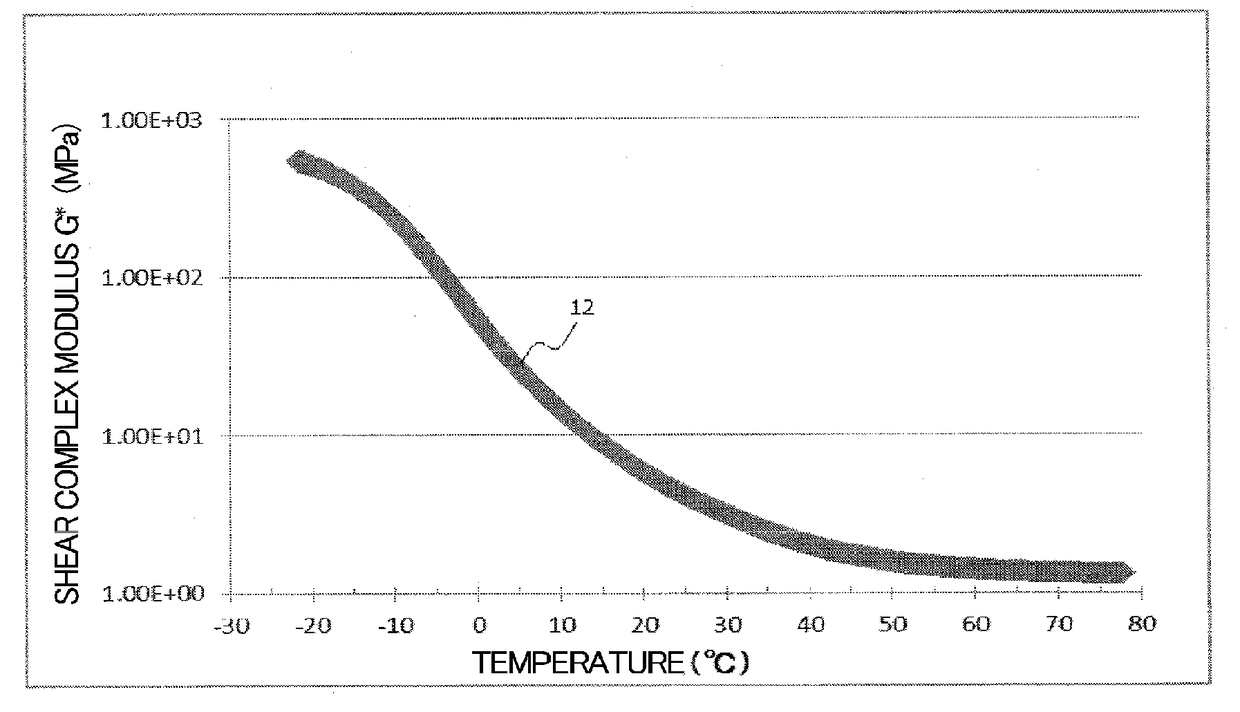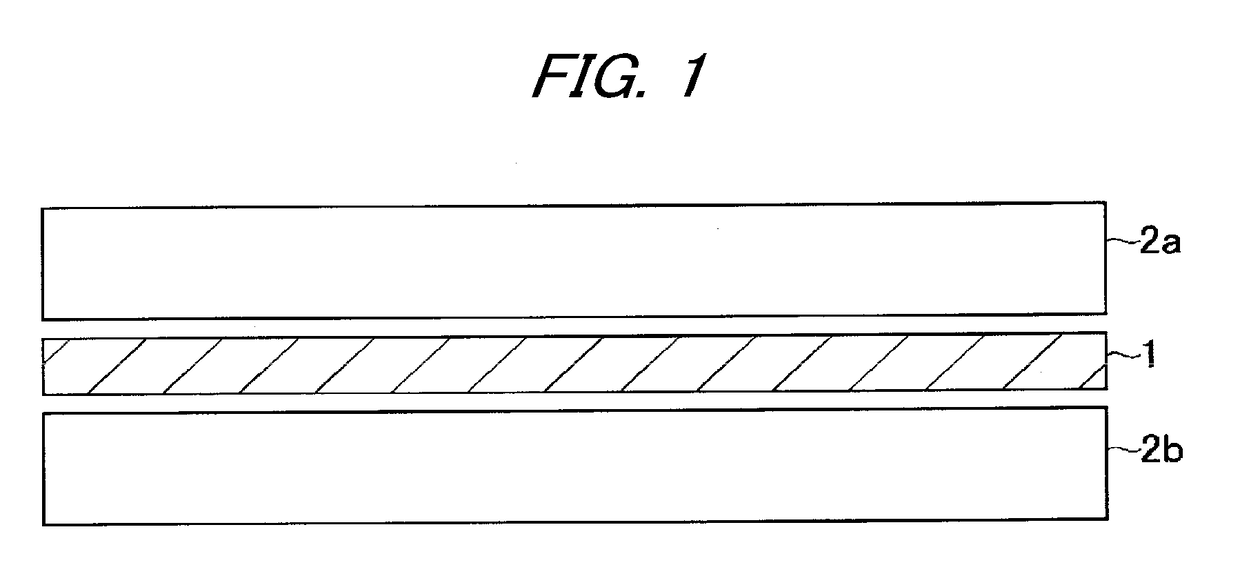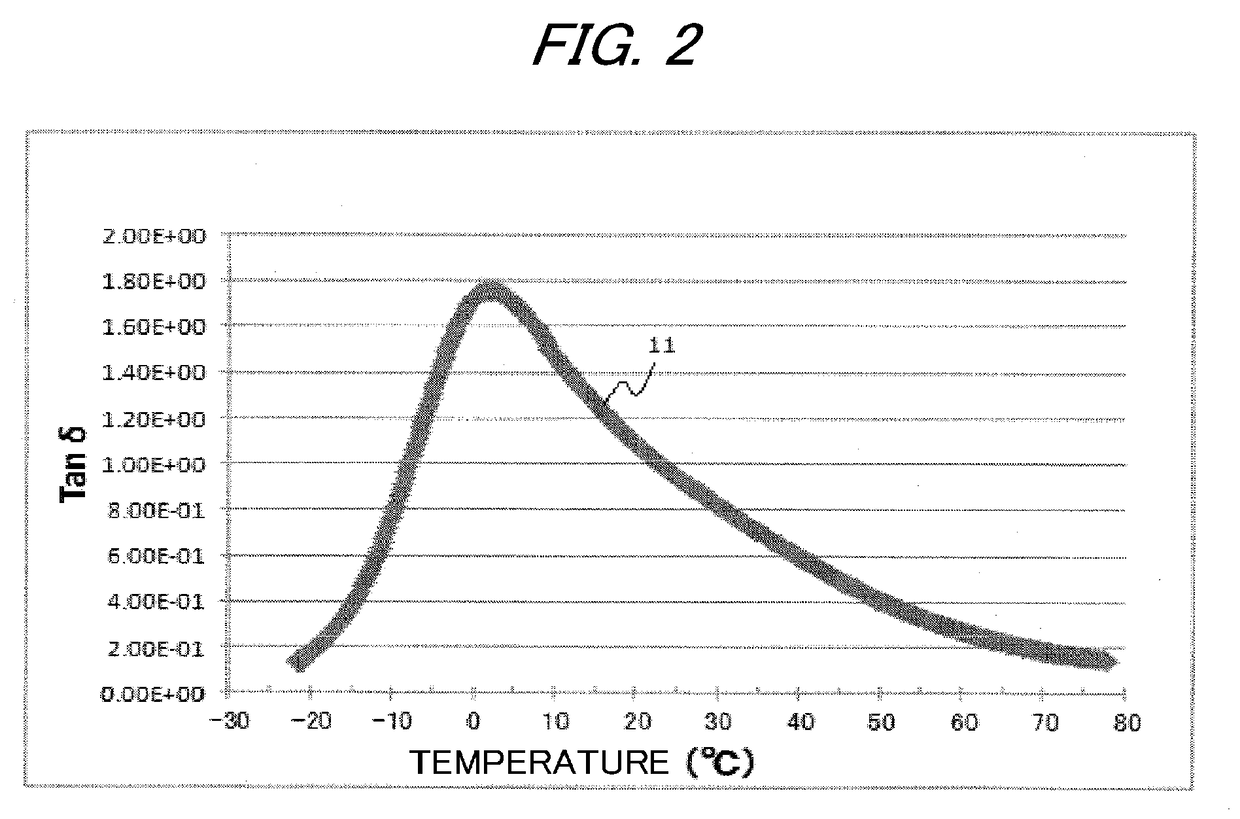Interlayer film for laminated glass and laminated glass
a technology of laminated glass and interlayer film, which is applied in the direction of windows, units with parallel planes, roofs, etc., can solve the problems of increasing the fuel efficiency of cars and the like, and achieve the effect of excellent sound insulation properties and hardly causing optical unevenness
- Summary
- Abstract
- Description
- Claims
- Application Information
AI Technical Summary
Benefits of technology
Problems solved by technology
Method used
Image
Examples
example 1
Preparation of Composition for Layer A
[0246]In a pressure resistant container purged with nitrogen and dried, 50.0 kg of cyclohexane as a solvent and 76 g of sec-butyllithium as an anionic polymerization initiator were placed, and then, 313 g of tetrahydrofuran as a Lewis base was placed (sec-butyllithium contains a 10.5 mass % cyclohexane solution, and therefore, the substantial addition amount of sec-butyllithium is 8.0 g). After the temperature inside the pressure resistant container was increased to 50° C., 0.5 kg of styrene was added thereto and polymerization was performed for 1 hour. Subsequently, a mixed liquid composed of 8.2 kg of isoprene and 6.5 kg of butadiene was added thereto and polymerization was performed for 2 hours, and further 1.5 kg of styrene was added thereto and polymerization was performed for 1 hour, whereby a reaction mixture containing a polystyrene-poly(isoprene / butadiene)-polystyrene triblock copolymer was obtained.
[0247]To the reaction mixture, a Zieg...
example 2
[0278]An interlayer film for laminated glass and a laminated glass were formed in the same manner as in Example 1 except that instead of blending CWO in the layer A, CWO was blended in the layer B, and the area density thereof in the layer B was set to 0.28 g / m2, and the evaluation of the respective physical properties was performed. The composition and the thickness of the interlayer film for laminated glass are shown in Table 2, and the evaluation result of the respective physical properties is shown in Table 3.
example 3
[0279]An interlayer film for laminated glass and a laminated glass were formed in the same manner as in Example 1 except that in the layer B, instead of using 100 parts by mass of PVB-1, a mixture of 100 parts by mass of PVB-2 (shown in Table 1) and 15 parts by mass of a polyester polyol was used, and the evaluation of the respective physical properties was performed. The composition and the thickness of the interlayer film for laminated glass are shown in Table 2, and the evaluation results of the respective physical properties are shown in Table 3. Incidentally, as the polyester polyol, Kuraray Polyol P-510 (poly[(3-methyl-1,5-pentanediol)-alt-(adipic acid)], manufactured by Kuraray Co., Ltd.) was used.
PUM
| Property | Measurement | Unit |
|---|---|---|
| shear storage modulus | aaaaa | aaaaa |
| frequency | aaaaa | aaaaa |
| height | aaaaa | aaaaa |
Abstract
Description
Claims
Application Information
 Login to View More
Login to View More - R&D
- Intellectual Property
- Life Sciences
- Materials
- Tech Scout
- Unparalleled Data Quality
- Higher Quality Content
- 60% Fewer Hallucinations
Browse by: Latest US Patents, China's latest patents, Technical Efficacy Thesaurus, Application Domain, Technology Topic, Popular Technical Reports.
© 2025 PatSnap. All rights reserved.Legal|Privacy policy|Modern Slavery Act Transparency Statement|Sitemap|About US| Contact US: help@patsnap.com



